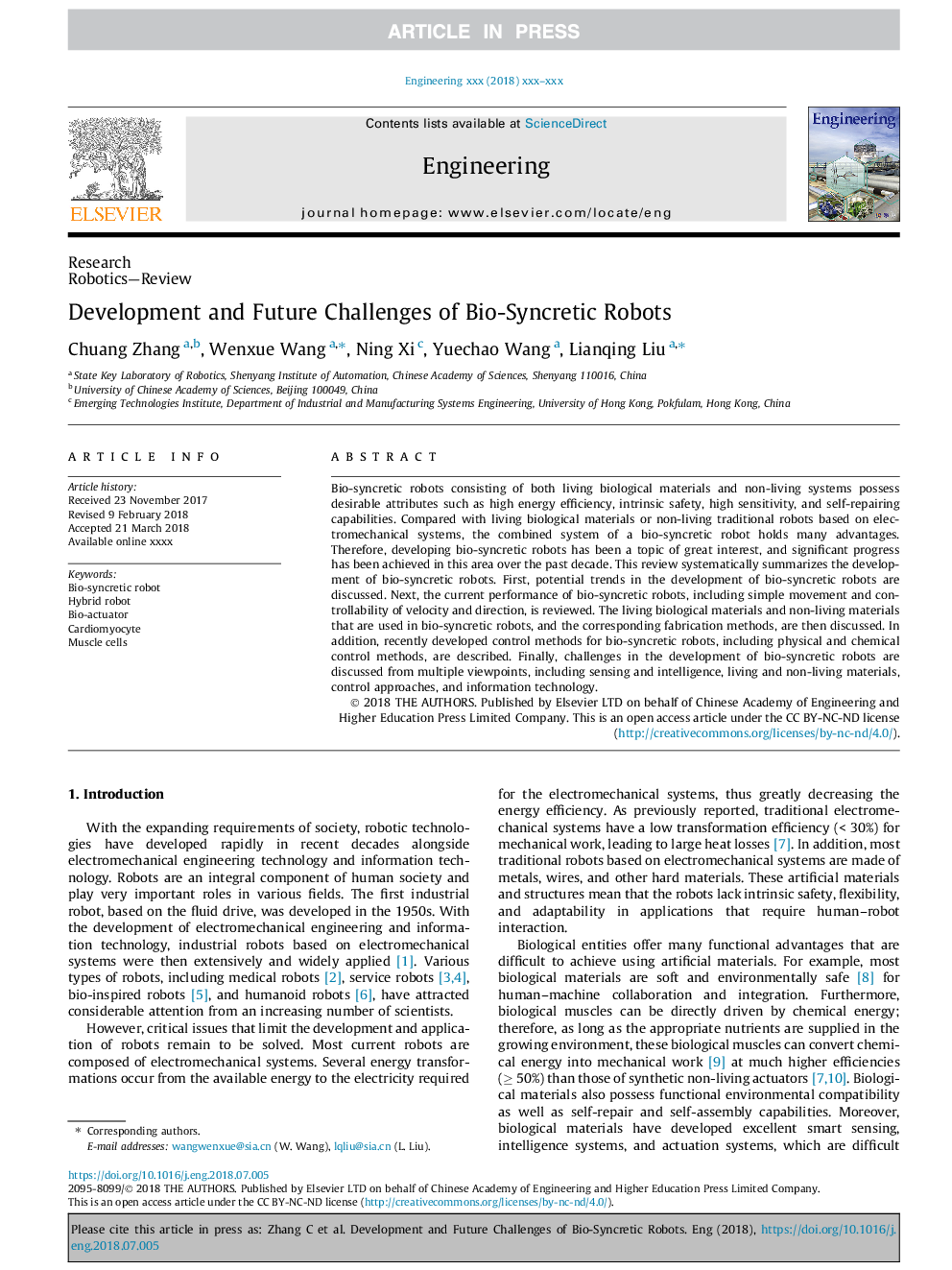| Article ID | Journal | Published Year | Pages | File Type |
|---|---|---|---|---|
| 8953618 | Engineering | 2018 | 12 Pages |
Abstract
Bio-syncretic robots consisting of both living biological materials and non-living systems possess desirable attributes such as high energy efficiency, intrinsic safety, high sensitivity, and self-repairing capabilities. Compared with living biological materials or non-living traditional robots based on electromechanical systems, the combined system of a bio-syncretic robot holds many advantages. Therefore, developing bio-syncretic robots has been a topic of great interest, and significant progress has been achieved in this area over the past decade. This review systematically summarizes the development of bio-syncretic robots. First, potential trends in the development of bio-syncretic robots are discussed. Next, the current performance of bio-syncretic robots, including simple movement and controllability of velocity and direction, is reviewed. The living biological materials and non-living materials that are used in bio-syncretic robots, and the corresponding fabrication methods, are then discussed. In addition, recently developed control methods for bio-syncretic robots, including physical and chemical control methods, are described. Finally, challenges in the development of bio-syncretic robots are discussed from multiple viewpoints, including sensing and intelligence, living and non-living materials, control approaches, and information technology.
Related Topics
Physical Sciences and Engineering
Computer Science
Computer Science (General)
Authors
Chuang Zhang, Wenxue Wang, Ning Xi, Yuechao Wang, Lianqing Liu,
